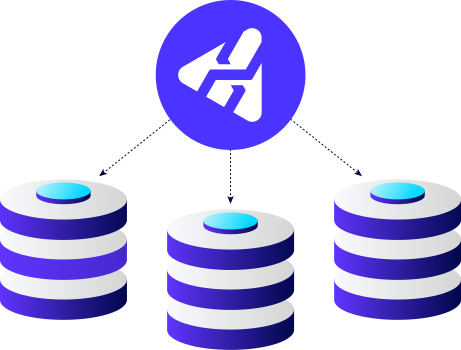Optimize Your P4 Performance Over Slow Connections.
P4 Proxy provides fast, local access to versioned files at remote sites. P4 Proxy gives users:
- Improved file access operations in locations with limited network resources
- Efficient caching of repository files at remote offices during syncs
- Seamless elimination of repeated transfers to and from the central server
Lower Overhead. Lighter Shared Load.
P4 Proxy offloads file transfer work from P4, while also giving versioned files to build farms and other automated processes. P4 Proxy offers:
- Minimal configuration and maintenance with no backups
- Transparency for users with no additional licensing costs
- Simplicity that lets organizations deploy multiple proxies
How to Set Up P4 Proxy Servers
Watch this brief tutorial video to learn how to use P4 Proxy Server to offload file transfer work to a proxy server.
Perforce P4 is the Industry Standard
Trusted by
19/20
Top AAA Game Dev Studios
82%
Rated P4’s ability to scale as “Best in Class”.*
100%
Realized a return on their investment within 2 years.*
Trusted by
9/10
Top Semiconductor companies
*Survey data gathered from 2023 customer survey.
FAQs
Want to know more about proxy servers?
A proxy server acts as an intermediary between clients who need resources from other servers. A client connects to the proxy server and requests information, such as files. Then, the proxy server evaluates and simplifies the request.
Unlike a typical server, a proxy server can often be a less capable machine. The CPU and memory don’t need to be any larger than the product machine. The main thing it needs is disk space.
Proxies were invented to add structure and boundaries to distributed systems.
Yes. P4 Proxy Server is free for standard users of P4. P4 Proxy is not available for P4 Cloud (formerly Helix Core Cloud).
For more documentation on setting up P4 proxy servers, please refer to P4 Server Administrator Guide.
Working On a Large Project? We Can Help.
If you’re evaluating P4 for your distributed team or want extra support for your installation, just reach out. We can provide you with some guidance or help you get started with a Proof of Concept (POC).
Get The Latest Version of P4 Proxy
Download the latest version of the P4 Proxy Server for fast, local access to versioned files at remote sites.
Get Started with P4
If you don’t yet have P4. Get started for free for up to 5 users and 20 workspaces.


